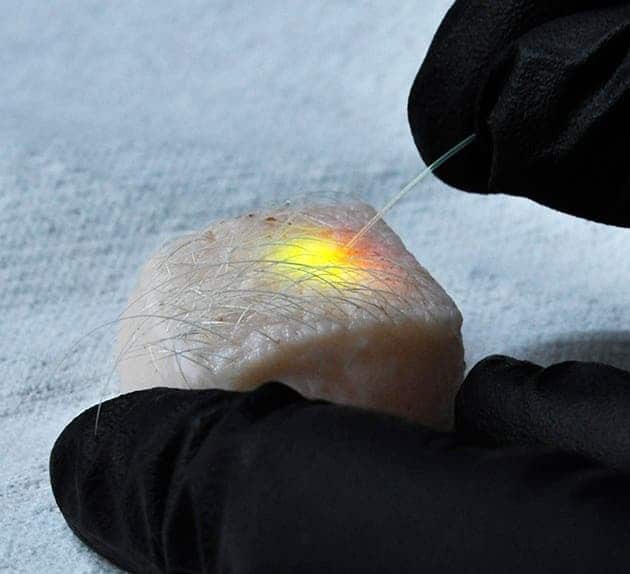Scientists have created a mixture of oil and fluorescent dyes that can be safely added to human cells – the dye then gets activated by short pulses of light and starts behaving like a laser, communicating the tissue’s position to doctors. The technology could add new ways for light to be used in diagnosis and treatment medicine.

The system was devised by Seok Hyun Yun and Matjaž Humar, two optical physicists from Harvard University, and uses oil or fat droplets to reflect and amplify light, basically generating a laser whenever needed. With this, scientists could more easily identify affected cells or cancerous cells.
Yun had previously developed a similar technology, generating laser light by engineering cells to express a fluorescent jellyfish protein, then placing a single such cell between a pair of external mirrors. But this work takes it one step further, generating the laser from within. This also solves another problem – that of spectrum broadness.
Luminescent probes used for human cells are not a novelty, but the problem is that they have pretty broad emission spectra around 30-100 nanometres. This means that you can only use so many probes at once, as they can get confused with the broad background of natural emissions in the tissue. For these microlasers, the spectrum is more narrow, in the 500-800 nanometre range, making it easier to label cells with light, says Jeffrey Karp, a bioengineer at Brigham and Women’s Hospital in Boston, Massachusetts.
“One of the greatest implications of the work is to track thousands of cells simultaneously with a single technique,” he says.
Furthermore, researchers can vary the wavelength and tag individual cells to their liking. While the technology isn’t yet ready for medical use, it’s very promising.
“It will be fun or very exciting to adapt the knowledge that’s in the traditional laser community and explore that in this platform to optimize laser characteristics,” says Yun.






